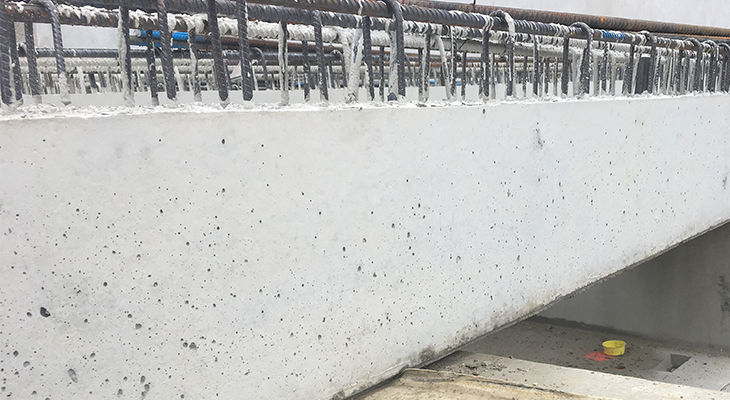Honeycomb repair in concrete surface honeycomb and larger surface voids require procedures resembling those for typical concrete repairs.
Filling surface voids in concrete walls.
How to eliminate voids in a concrete casting.
I ve never used it but i imagine applying it with a trowel would be the ticket.
Water voids occur in the concrete surface when drops of water become entrapped between the concrete and the form during vibration.
The water later evaporates to leave voids.
The guys at home depot had a lot of fun lamenting the fact that the hole existed to begin with and then suggested that i build a mold on one side of the wall and fill it in with a pour of concrete.
Go to your favorite home store and get a sack of stuff called parge it s used to fill in rock pockets on formed concrete placements such as walls.
Careful preparation and methodical practices can eliminate even the worst of surface voids.
Water similar to release agents water is also trapped against the mold s working surface resulting in voids.
Next time as was mentioned pour it wetter and smack the forms with a hammer.
Causes perhaps the most influential cause of bugholes is improper vibration.
However problems do arise if the concrete surface is to be painted or if the voids reach a larger diameter typically greater than 1 inch.
Voids are created when concrete is partially supported by base soils or through the use of anchors or rebar to foundation walls or through the use of sonotubes.
The permissible number and size of bug holes in a concrete surface is not defined in either aci 301 05 or aci 301 10 specifications for structural concrete in fact aci 301 05 does not limit either the number or size of surface voids in as cast surface finishes.
As the soil settles or is carried away by other means a gap opens up between the soil and the bottom of the concrete slab resulting in a loss of support.
These surface voids are primarily an aesthetic problem for exposed structural concrete.
Most of these water drops come form the mixing water but some are introduced from the cavities of the moist aggregate particles form which they are forced during vibration.
When a release agent is over applied it may pool or puddle on the lower extremities of the mold and when concrete is poured these pools prevent the concrete from filling in 100.
While repairing voids or honeycomb in concrete surface the most common question that arises is what should be the thickness of the.
Aci 301 05 specifies two as cast surface finishes.
Tip 6 use the correct release agent for the removal of the concrete from the moulds.
Sometimes filling a form too fast can also cause the concrete to segregate which can cause more surface voids.






























